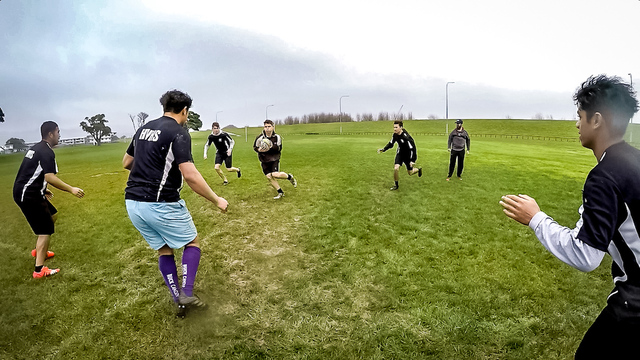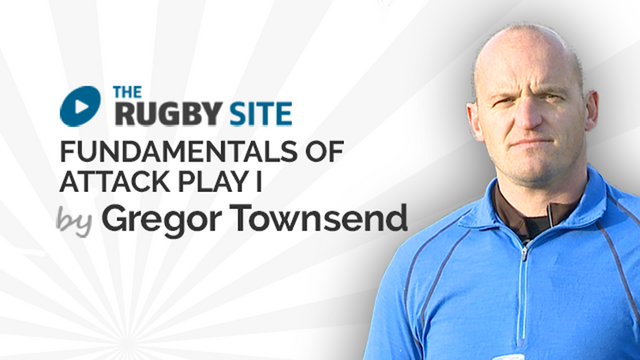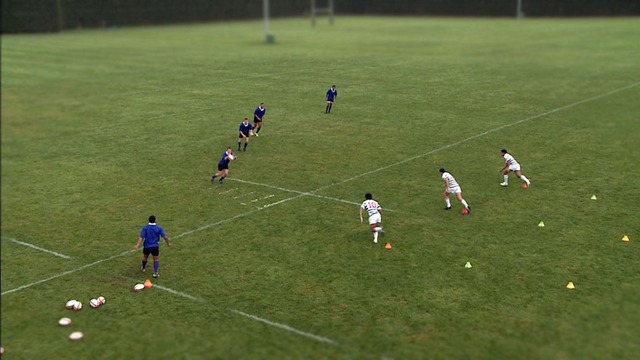How back-line communication helps ‘spot’ attacking opportunities
Whatever planning goes into a game beforehand, it still has to be enacted on the field by the players themselves. Game intelligence in the midst of the turmoil of ever-changing conditions on the field cannot be replicated, which is why the best coaches will always look for players who can maintain a view of ‘the big picture’, whatever the pressure.
Historically this intelligence has occurred in the space between the number 10 and the number 12 position. One of the most important improvements for the 2003 England World Cup winning side was the selection of Will Greenwood alongside outside-half Jonny Wilkinson. Wilkinson was still a callow 18 year-old when he first represented England in 1998, and Greenwood became his tactical ‘spotter’ as much as his physical minder.
As Eddie Jones noted back in 2007:
“Four years ago (in 2003) he (Wilkinson) had a very good partnership with his inside-centre Will Greenwood who was like Aaron Mauger to Daniel Carter, the eyes and ears of the team.”
It is a pattern which has been repeated by many successful teams. Australia introduced the 60-cap overseas eligibility rule largely so that they could select the ‘eyes’ and experience of 32 year-old Matt Giteau outside Bernard Foley. Foley responded by enjoying the best tournament of his international career.
Jonny Wilkinson himself has commented on the importance of having a second set of eyes outside the first receiver:
“As the out-half, it’s a massive thing to have all those calls coming in so you know about your options and your decisions are better informed…
“Catty (Mike Catt) and Greenwood were certainly great talkers — if they were here now we wouldn’t get a word in! But that communication was the key.
“I remember coming off the pitch at Twickenham and doing TV interviews with the media being very flattering and I was feeling like a fraud, thinking: ‘Are you kidding me? I’m not a genius — I just heard someone say give him the ball, so I gave him the ball!’ My best-looking games were when someone was in my ear for 80 minutes telling me what to do…”
More recently, England number 10 George Ford outlined how much the presence of Matt Toomua has helped his game at Leicester Tigers:
“Matt Toomua is by far the best 12 I have played with… To have him outside of me has been great – his communication, distribution and another set of eyes to bring in people like Jonny May, Nick Malouf and Telusa Veainu into the game. He is a joy to play with.”
Good ‘spotting’ of necessity comes from the outside-in, and the current England side coached by Eddie Jones has been attempting to move the point of observation even further out over the past twelve months.
Jones has consistently selected two natural number 10’s in the key roles at outside-half and inside centre (Ford and Owen Farrell), but he has also picked other backs with strong communication skills outside them, like number 13 Jonathan Joseph and wings Johnny May and Anthony Watson.
Two outstanding examples of those communication skills were on display in the use of England’s kicking game – against Australia in the 2017 end-of-year tour, and in the second round of the 2018 Six Nations versus Wales.
England played perhaps their best game of wet-weather rugby since Jones took over against the Wallabies, and they scored a try in the 72nd minute which was the result of excellent ‘spotting’ and communication skills in the outside backs:
This is the just the scoring phase, in which Danny Care directs an over-the-shoulder top-spun kick into an empty backfield for Joseph and Watson to chase, with Joseph ultimately converting the opportunity into a try.
The sequence before the play provides considerable background colour. It begins with the backfield defender on the critical side of the field, replacement half-back Nick Phipps, making a decision to leave his sweeping role and play up in the line:

Ten seconds before the scoring phase, Phipps sees the Wallaby defence getting narrow on the short-side and steps up towards the end of the defensive line.
The spotting of this movement on the England side comes from both half-back Danny Care…

and the two outside backs beyond him, Joseph and Watson. At the key moment, they both have their left arms out, pointing towards the target space:

So well-informed by his outsides, Care can place the kick over the top of the line into open space for two of England quickest attackers to chase it down.
The second example from the Wales game was very similar in content:
In this instance Anthony Watson has gotten first touch to a high kick and deflected it back on the England side. I am sure this is a situation that England would have planned for in their preparation, but the on-field execution still depends on excellent communication skills:

When the ball reaches the England first receiver Owen Farrell, the opportunity which has been created is clearly visible – but it is visible to Jonny May on the far side.
All fifteen Welsh defenders have been caught in the ‘wrong’ half of the field, and the widest among them is a forward, number 6 Aaron Shingler (in the headband). England’s left wing May instantly summarizes the mismatch situation and flags it up with his arm out, looking for the diagonal kick.
Once more Farrell puts in a low ‘skidder’ through on the wet surface for May to chase down and score.
Summary
In the modern professional era, it is no longer enough to rely on one or two players – typically the numbers 9 and 10 – to see and make all of the attacking play. They need to have assistance, and that assistance always comes from the players outside them.
It is the players looking in from the outside-in who have the time and space to see opportunities, with both the halfbacks committed to reacting to what is immediately in front of them. The wider the angle, the better the view – and that applies especially in the kicking game. In their games against Wales and Australia, ‘spotting’ came from the number 13 position and the two England wings.
The role which used to be played by the number 12 more than a decade ago, now has widened out its responsibilities to include any of the outside backs. The premium on having people in those positions with as much intelligence and observational ability as physicality is therefore crucial. In a practical sense, they are the ones pulling the strings of the puppeteers!
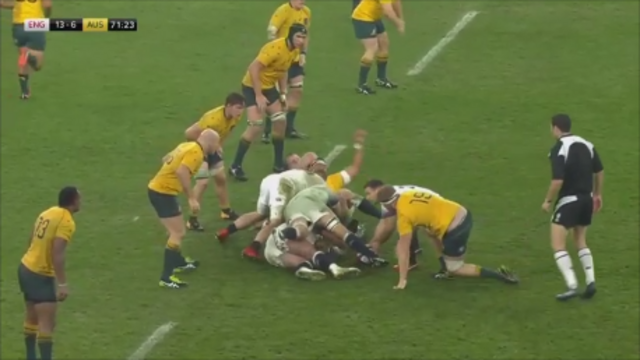







.jpg)
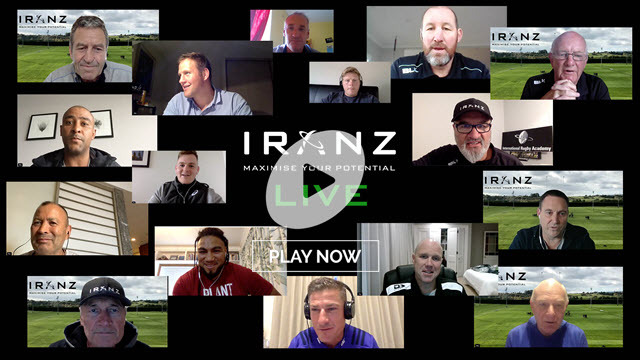

.jpg)






